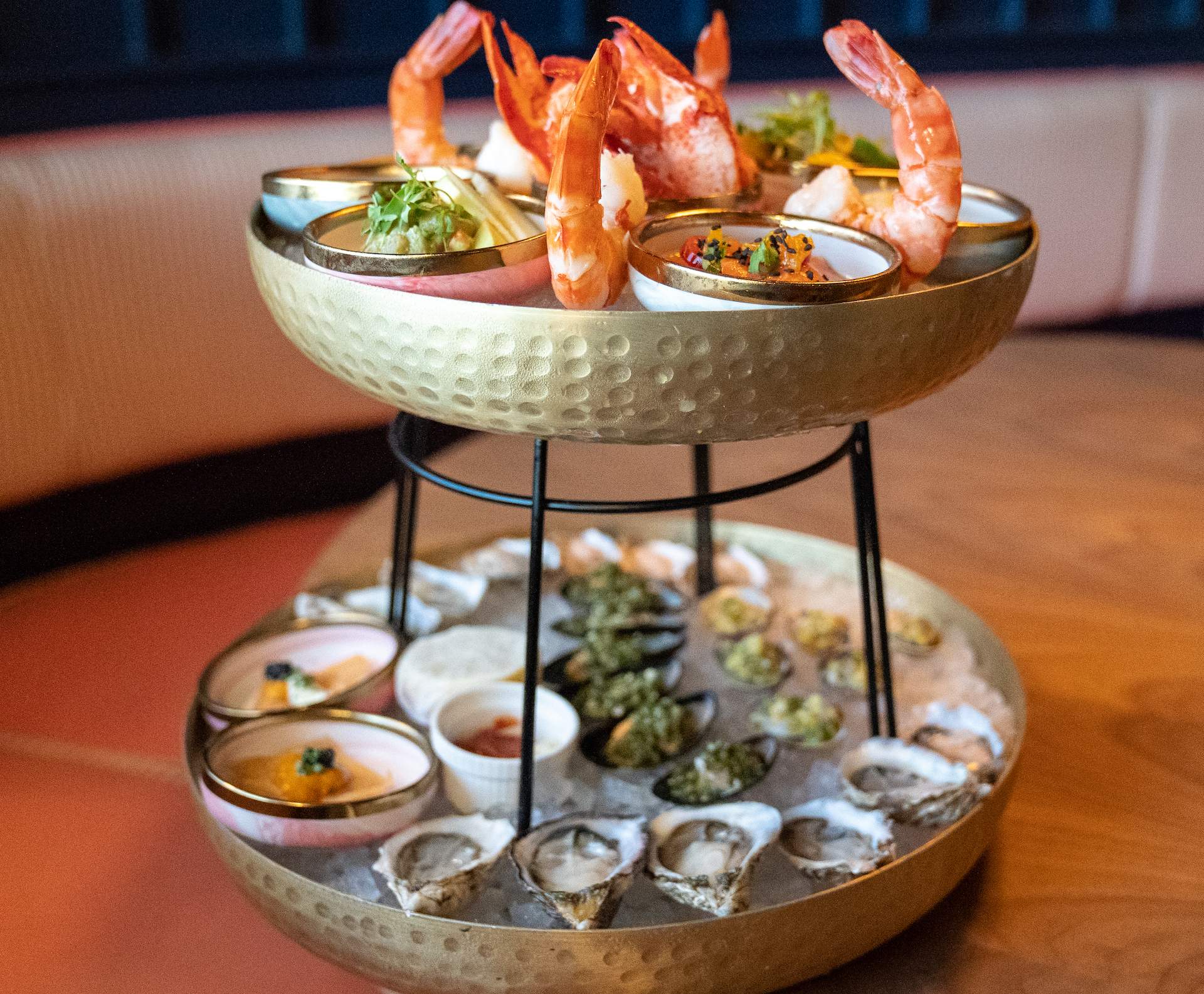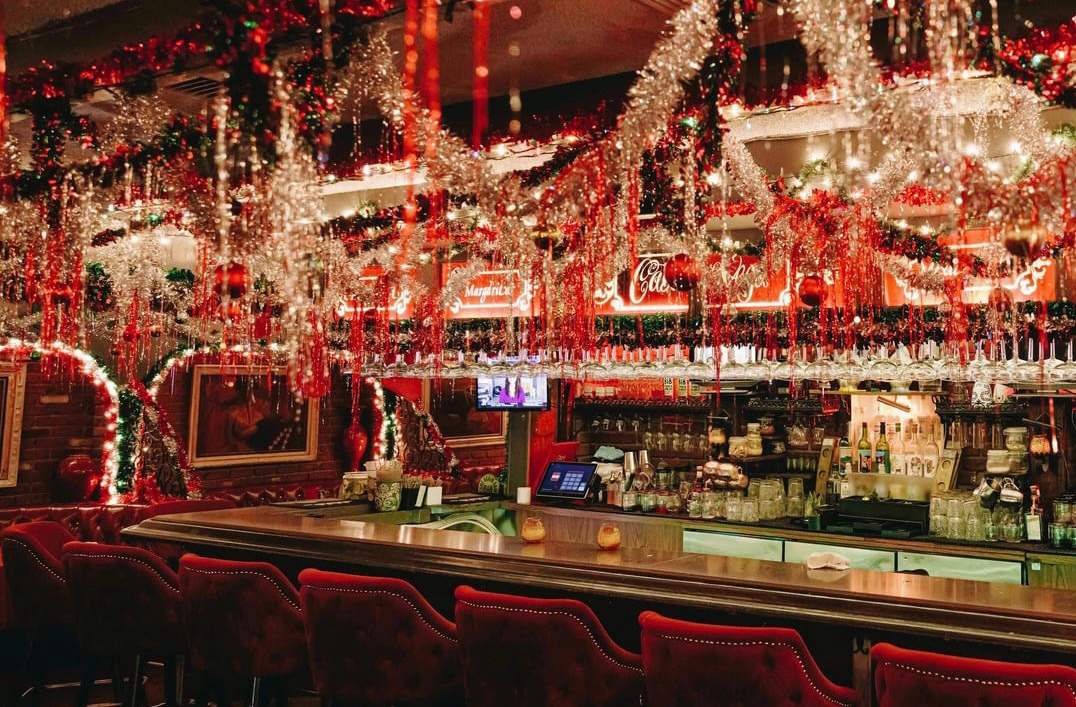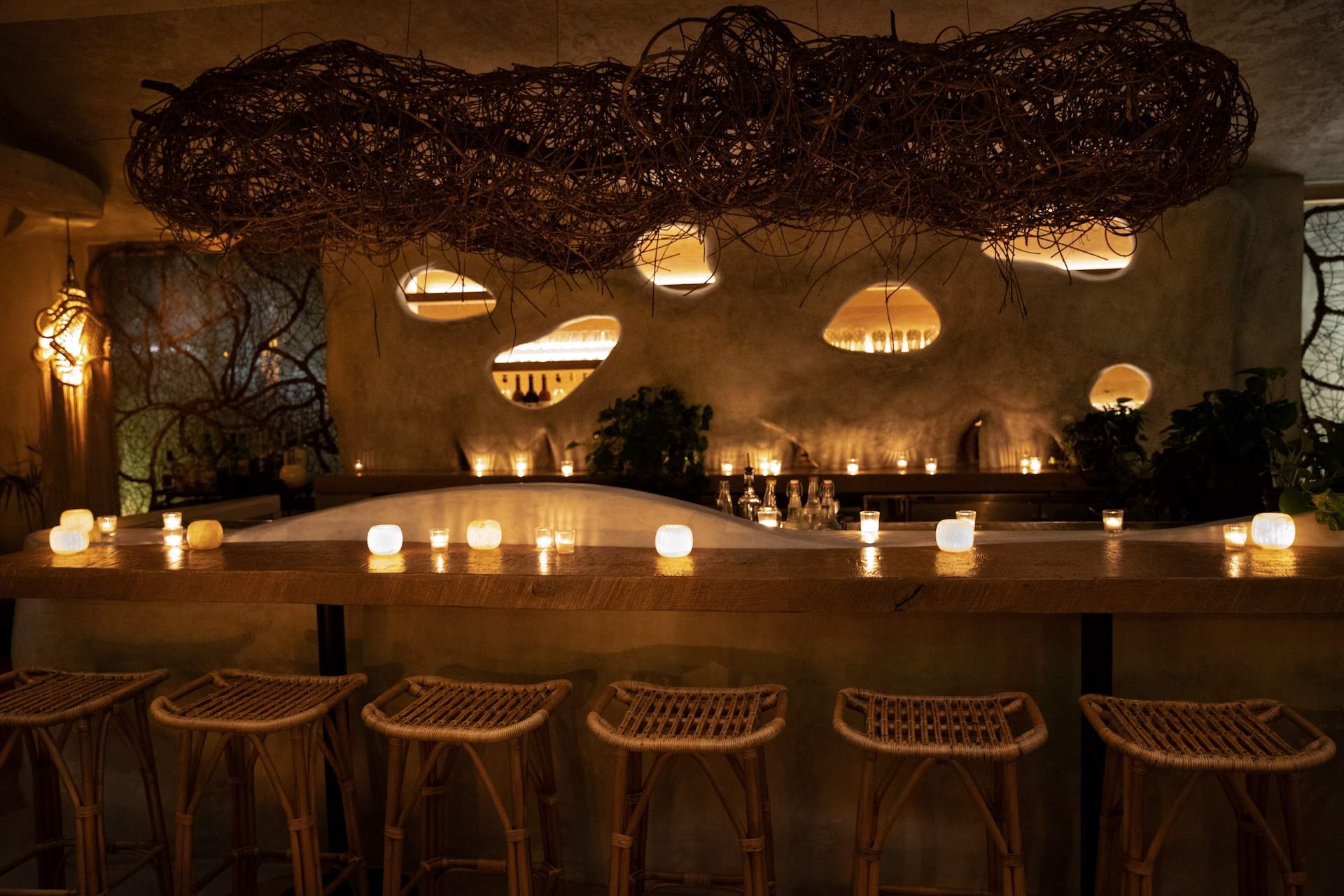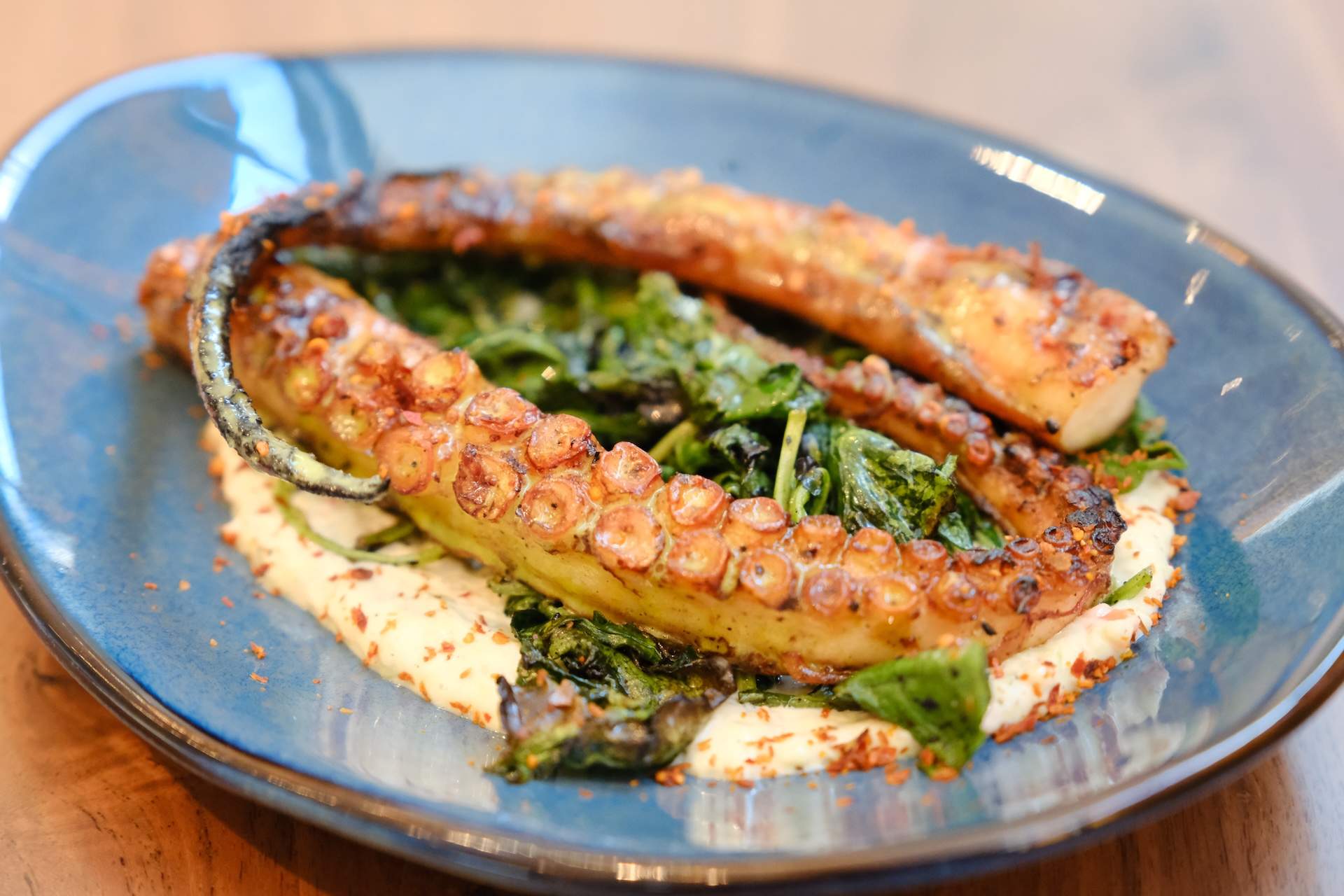One of the greatest dining delights is watching a gleaming seafood tower arrive at the table. Think two or three pristine tiers of sweet crab claws, just-shucked oysters, and plump lobster tails chilled on crushed ice, and served with melted butter and sinus-clearing horseradish. Offerings might change from summer to winter, but the act of squeezing a bright lemon over the whole thing and digging in is a joy no matter the season.
For many, this might seem like a pricey relic of the early aughts, but a few restaurants in Los Angeles are bringing back the seafood tower to show off new types of fish and different seafood preparations. Crudo, ceviche, and smoked fish all have a place on these new towers. They also hope diners learn a bit about seafood sourcing, and they’re often making such delights more affordable than past iterations. In Downtown Los Angeles, Rappahannock chef Wilson Santos makes towers for solo diners and large parties alike, with prices lower than similar seafood joints. At Echo Park’s Lonely Oyster, chef Dominique Crisp dazzles diners with a wide array of shellfish while showcasing the benefits of transparent aquafarming practices.
Modern seafood towers are a version of French plateaux de fruits de mer, ornate arrangements of raw and cooked shellfish served cold on a bed of ice. They became integral to brasserie menus in the 1920s, a time of tourism and industrialization that allowed for quicker transport of fresh provisions. French dining became all the rage in Los Angeles in the 1980s, and celebrity favorites such as L’Orangerie and Le Restaurant became go-to destinations for stylishly plated seafood.
The seafood tower had a fine-dining resurgence in the 2000s, inspired by New York steakhouses such as Peter Luger and the Palm. The West Coast was eager for its version, and fine-dining chain Mastro’s stepped up to answer. Eager to innovate on jumbo shrimp cocktails and calamari appetizers, the steakhouse aimed for variety. Mastro’s seafood tower became the pinnacle of splurging, an item to order at a company dinner where the boss picks up the tab or a romantic Valentine’s Day meal meant to impress.
This newer group of LA restaurants is upending that reputation.
“Rappahannock is the restaurant you can go to any day,” Santos, who opened the raw oyster bar in 2018, says. “It doesn’t have to be a special day or a day for you to impress. It should never feel hard to be here and find what you love.”
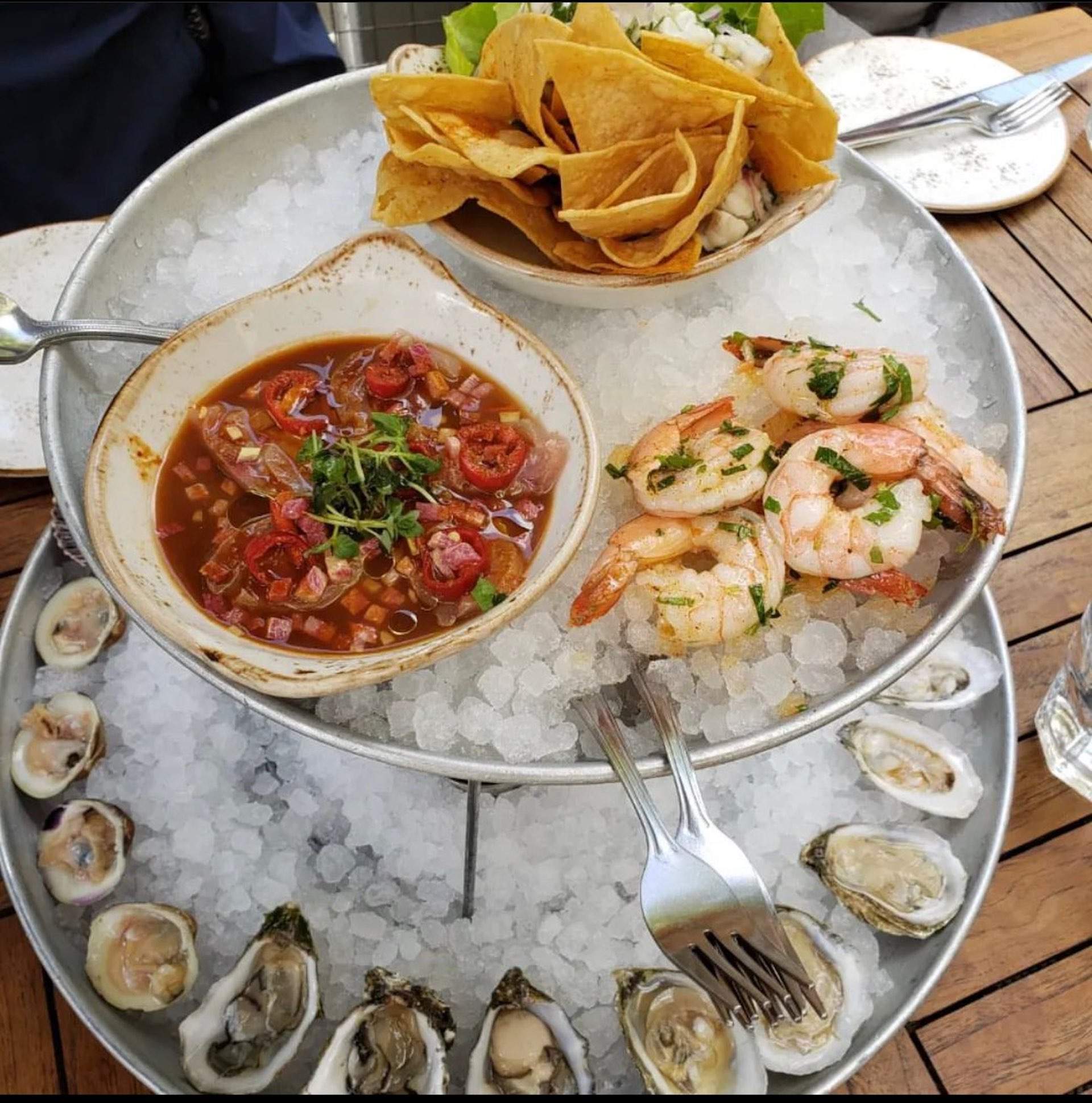
At Rappahannock, the small tower serves one and comes with hamachi, six oysters, two bay scallops, two clams, and four shrimp (as part of a cocktail). The hamachi is marinated in ponzu rice vinaigrette at room temperature for a week before it’s served, allowing time for the dish’s brightness and acidity to shine. The solo tower costs $55, a generous offering compared to more traditional restaurants where such towers typically range from $85 to $100. The largest one at Rappahannock costs $150 and serves four. It includes more of each fish from the basic tower, plus ceviche and fresh lobster salad. Ceviche isn’t typically served on seafood towers, but presenting it this way has made it increasingly popular at Rappahannock.
Santos is excited by the public’s growing curiosity for different kinds of fish.
“When I started off in kitchens, the fish of the day used to be just salmon,” he says, “but now, with changing interests, it’s cool that I get to work with octopus, scallops, uni, and swordfish.”
Crisp of Echo Park’s The Lonely Oyster leverages diner interest to increase sustainability awareness. He is thrilled to talk about a new generation of fishmongers, farmers, and chefs that are making seafood accessible while preserving resources.
“We’re just trying to be the greatest sustainable seafood restaurant that’s not fussy,” Crisp says. “This is such a warm and lively place that you want to belly up to the bar and have the experience with the shucker and the bartender.”
Crisp uses classic towers to tell stories about the abundance of the oceans. The Deck Hand, the restaurant’s smallest option, features wild uni and buttery caviar with wonton crisps, an unusual selection for a seafood tower. The biggest plateau has all of that, plus salmon crudo, scallop carpaccio, and surf and turf tartare. The tartare is made with thinly sliced Australian Wagyu topped with Yarra Valley trout roe, yet another example of The Lonely Oyster pushing boundaries of the genre.

Crisp hopes these dishes will spark conversations about seafood farming. His staff is trained to share origin stories. The Hama Hama and Glacier Point oysters come from Crisp’s farmer friends in Hood Canal and Kachemak Bay, Alaska, respectively. The salmon crudo is made with king salmon farmed in New Zealand, which is a Best Choice according to the Monterey Bay Aquarium’s Seafood Watch guide.
Santos and Crisp hope this new variety and access to information will intrigue everyone from first-time seafood explorers to eco-conscious aficionados.
“I know in LA things can get trendy, but some things are trendy and good for a reason,” Crisp says. “I’m really glad that seafood is literally the coolest thing ever right now.”
Crisp believes chefs like him and Santos have only just skimmed the surface and that more variety and more information will make the experience of seafood towers all the more thrilling for diners in years to come.
“You need to be okay with being the person in charge that needs to improve personally to expand the knowledge of everyone,” Crisp says. “I have to pioneer that.”
Lisa Kwon is a reporter and writer focused on arts and food culture in Los Angeles, CA. Find Lisa on Instagram and Twitter.

